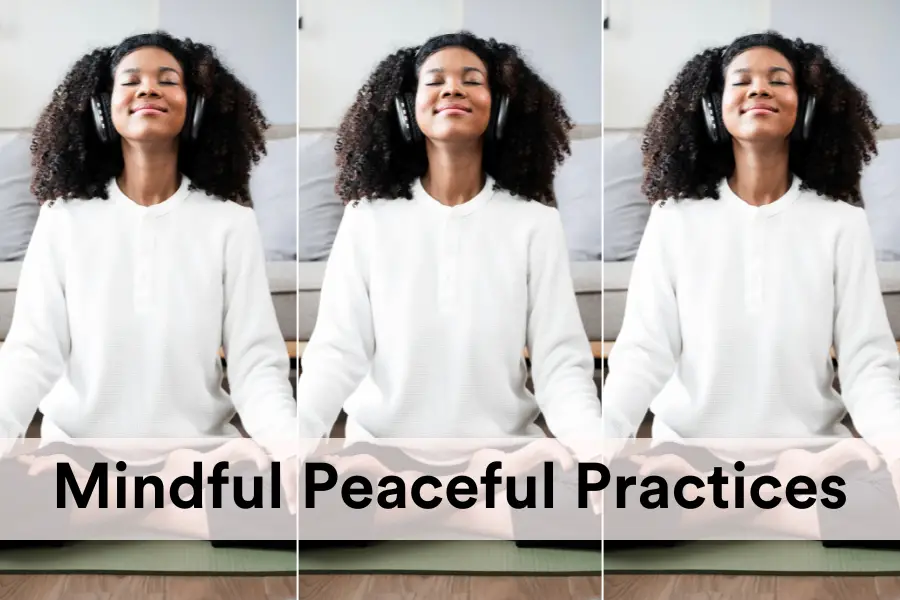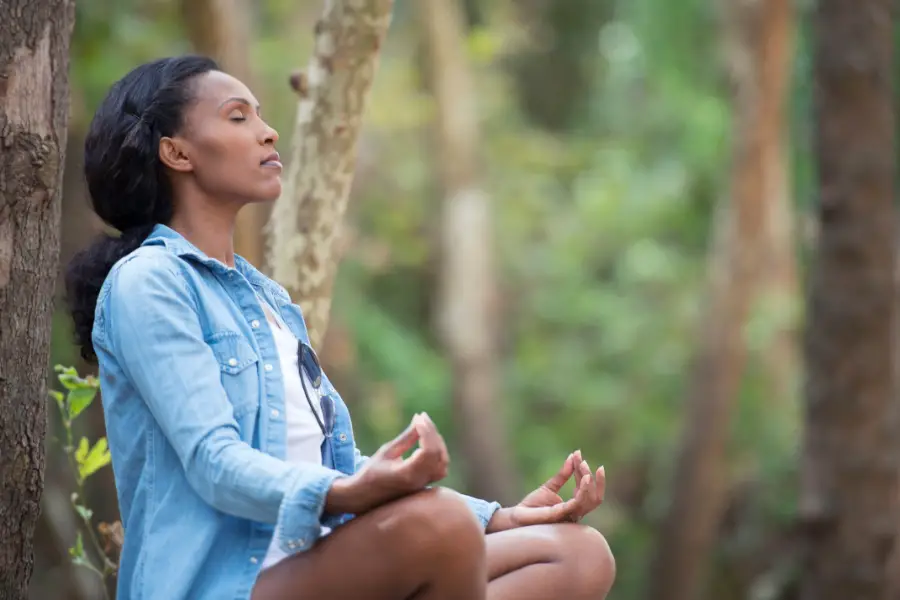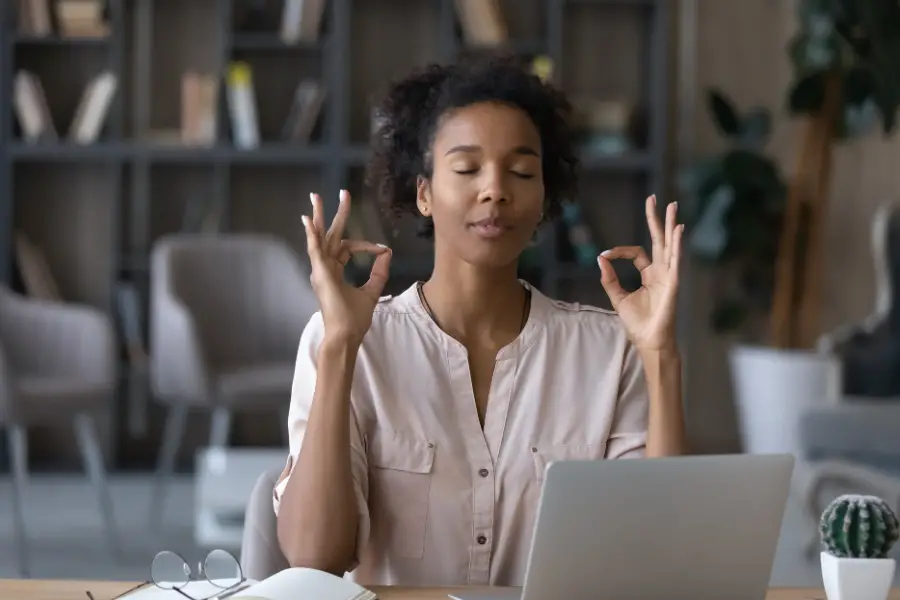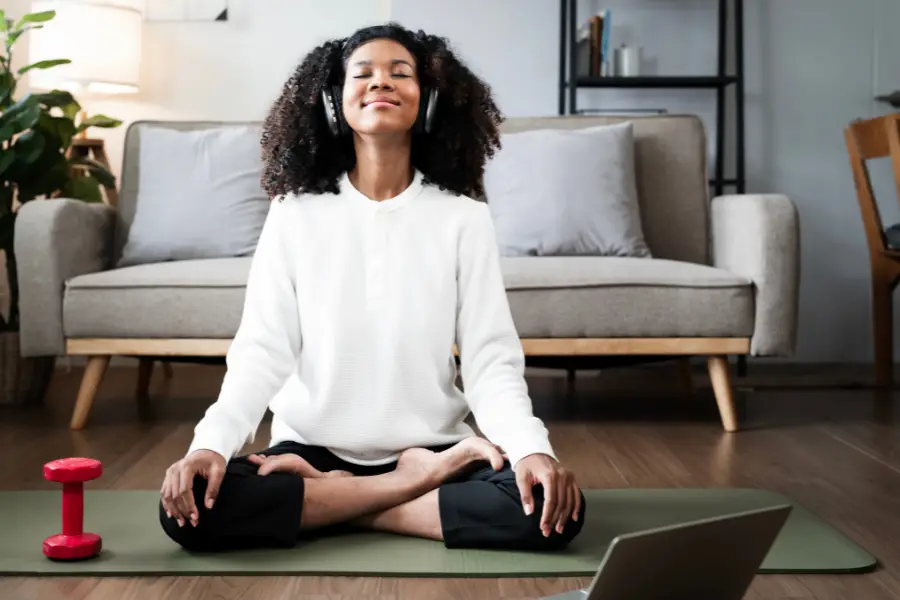In a world that often feels overwhelming, mindfulness practices can offer Black women a path to inner peace and strength. This article explores various mindfulness techniques and how they can help navigate daily challenges, promote emotional healing, and foster community connections. By embracing these practices, Black women can reclaim their time, cultivate self-awareness, and build resilience in the face of adversity.
Table of Contents

Key Takeaways
- Mindfulness helps reduce stress and increase self-awareness.
- Creating a personal space for mindfulness can enhance your practice.
- Breathing exercises and guided meditations are effective techniques.
- Sharing experiences within a community can provide support and healing.
- Incorporating mindfulness into daily routines promotes lasting peace.
The Power of Mindfulness for Black Women
Understanding Mindfulness
Mindfulness is about being present and aware of your thoughts and feelings without judgment. For Black women, this practice can be especially powerful. It allows you to pause and reflect amidst the chaos of daily life. Mindfulness helps you reconnect with yourself.
Benefits of Mindfulness
Practicing mindfulness can lead to numerous benefits, including:
- Reduced stress and anxiety
- Improved emotional health
- Better focus and concentration
- Enhanced self-awareness
These benefits are crucial for Black women, who often face unique challenges in their lives.
Mindfulness in Daily Life
Incorporating mindfulness into your daily routine can be simple. Here are a few ways to do it:
- Start your day with a few deep breaths.
- Take a moment to appreciate your surroundings.
- Practice gratitude by noting things you are thankful for.
Mindfulness is not just a practice; it’s a way to reclaim your peace and strength in a world that often feels overwhelming.
By embracing mindfulness, Black women can find a sense of calm and empowerment, allowing them to navigate life’s challenges with grace.
In her book, black people breathe: a mindfulness guide to racial …, Clarke shares valuable exercises and breathwork practices that can help you on this journey.
Creating Sacred Spaces for Mindfulness

Creating a sacred space is essential for nurturing your mindfulness practice. This is a personal haven where you can recharge and reconnect with your true self. Candles can transform your environment, making it feel special and inviting. Here are some tips to help you set up your sacred space:
Setting Up Your Space
- Choose a quiet area in your home.
- Arrange comfortable seating, like cushions or a chair.
- Keep the space clean and clutter-free to promote calmness.
Incorporating Cultural Elements
- Use items that reflect your heritage, such as art or textiles.
- Consider adding a small altar with meaningful objects.
- Include photographs of loved ones or inspirational figures.
Using Candles and Aromatherapy
- Select candles that resonate with you, like those from the melanated goddess circle, which are designed for Black women.
- Experiment with different scents to find what soothes you best.
- Combine candles with essential oils for a calming atmosphere.
Creating a sacred space is not just about the physical setup; it’s about honoring your presence and allowing yourself to feel at peace.
By establishing a dedicated area for mindfulness, you can cultivate a deeper sense of tranquility and connection to yourself.
Mindfulness Meditation Techniques
Breathing Exercises
Breathing exercises are a simple yet powerful way to start your mindfulness journey. Here are some steps to follow:
- Find a quiet spot where you can sit comfortably.
- Close your eyes and take a deep breath in through your nose, feeling your belly expand.
- Slowly exhale through your mouth, letting go of any tension.
- Repeat this for a few minutes, focusing on your breath.
Guided Meditations
Guided meditations can help you stay focused and engaged. You can find many apps or online resources that offer these. Here’s how to get started:
- Choose a comfortable position.
- Select a guided meditation that resonates with you.
- Follow the instructions, allowing yourself to relax and absorb the experience.
Using Music and Sounds
Incorporating music or nature sounds can enhance your meditation practice. Consider these options:
- Soft instrumental music to create a calming atmosphere.
- Nature sounds like rain or ocean waves to help you feel connected to the earth.
- Chanting or mantras that resonate with you, which can help focus your mind.
Mindfulness is a journey, not a destination. Every small step counts towards finding your peace.
By practicing these techniques, you can cultivate a sense of calm and clarity in your life. Remember, it’s about being present and embracing the moment, even amidst chaos. As you explore these methods, you may find that they help you prioritize self-care and create a life filled with joy and well-being, just like in “the black woman’s guide to coping with stress“.
Overcoming Stress Through Mindfulness

Identifying Stress Triggers
Understanding what causes your stress is the first step to managing it. Here are some common triggers:
- Work-related pressures
- Family responsibilities
- Societal expectations
Recognizing these triggers can empower you to take control. By identifying what stresses you out, you can start to address these issues head-on.
Mindful Stress Management
Once you know your triggers, you can use mindfulness to manage stress. Here are some techniques:
- Deep Breathing: Take a few minutes to focus on your breath. Inhale deeply, hold for a moment, and exhale slowly.
- Meditation: Spend a few minutes each day in quiet reflection. This can help clear your mind and reduce anxiety.
- Physical Activity: Engage in activities like walking or yoga. These can help release built-up tension.
Building Resilience
Resilience is your ability to bounce back from stress. Here are ways to build it:
- Accepting Change: Life is full of ups and downs. Embrace the changes instead of resisting them.
- Seeking Support: Talk to friends or family about your feelings. Sharing your journey can lighten your emotional load.
- Practicing Self-Care: Engage in essential self-care practices every black woman should embrace, like cooking healthy meals or seeking therapy. This nurtures your well-being and helps you cope better with stress.
Mindfulness is not just a practice; it’s a way to find peace in the chaos of life. By incorporating these techniques, you can transform stress into a stepping stone for growth and resilience.
Community and Connection in Mindfulness
Sharing Your Journey
Sharing your experiences can be a powerful way to connect with others. Talking about your feelings helps to lighten the load. Here are some ways to share:
- Join a local group or online community.
- Write in a journal or blog.
- Have open conversations with friends and family.
Finding Support Groups
Support groups can provide a safe space for Black women to express themselves. These groups can help you:
- Feel understood and less alone.
- Gain new perspectives on your challenges.
- Build lasting friendships.
Engaging in Group Meditations
Group meditations can enhance your mindfulness practice. They create a sense of belonging and shared purpose. Surround yourself with individuals who understand your experiences and can offer empathy and encouragement. Here are some benefits of group meditations:
- Increased motivation to practice regularly.
- A deeper sense of community.
- Opportunities to learn from others.
Mindfulness is not just a personal journey; it’s also about connecting with others who share similar experiences. Together, we can create a supportive environment that fosters healing and growth.
Mindfulness for Emotional Healing

Recognizing Emotional Triggers
Understanding what makes you feel upset is the first step to healing. Here are some common emotional triggers:
- Stressful situations: Work deadlines, family issues, or financial worries.
- Past experiences: Memories that bring back pain or sadness.
- Social interactions: Conflicts with friends or family.
By identifying these triggers, you can start to manage your reactions better.
Practicing Self-Compassion
Being kind to yourself is essential. Here are ways to practice self-compassion:
- Acknowledge your feelings: Accept that it’s okay to feel sad or angry.
- Talk to yourself kindly: Use positive affirmations to uplift your spirit.
- Take breaks: Allow yourself time to relax and recharge.
Self-compassion is a powerful tool that helps you heal emotionally.
Healing Through Reflection
Taking time to think about your feelings can lead to healing. Here are some reflective practices:
- Journaling: Write down your thoughts and feelings to understand them better.
- Meditation: Spend a few minutes each day focusing on your breath and clearing your mind.
- Art: Create something that expresses your emotions, like drawing or painting.
Mindfulness is not just about being calm; it’s about understanding and healing your emotions. By practicing mindfulness, you can find peace even in chaos.
Incorporating these practices into your life can help you navigate emotional challenges and foster a sense of well-being. Remember, healing is a journey, and every step counts!
Integrating Mindfulness into Your Routine
Daily Mindfulness Practices
Integrating mindfulness into your daily life can be simple and rewarding. Here are some easy ways to start:
- Start with five minutes of focused breathing each day.
- Practice mindful eating by paying attention to the taste and texture of your food.
- Take short breaks to notice your surroundings, like the sounds or smells around you.
Mindfulness at Work
Work can be stressful, but you can bring mindfulness into your job:
- Take a few deep breaths before starting a task.
- Use a timer to remind yourself to take short breaks.
- Focus on one task at a time to avoid feeling overwhelmed.
Mindfulness in Relationships
Being mindful can improve your connections with others:
- Listen actively when someone is speaking to you.
- Share your feelings openly to create a deeper bond.
- Spend quality time together without distractions, like phones or TV.
Mindfulness is a journey, not a destination. It helps you stay present and appreciate the little moments in life.
By making these practices a part of your routine, you can create a more peaceful and balanced life. Remember, it’s about prioritizing well-being and finding joy in the chaos.
Incorporating mindfulness into your daily life can make a big difference. Start by taking just a few minutes each day to focus on your breath or reflect on what you’re grateful for. This small change can help you feel more relaxed and present. For more tips and resources, visit our website!
Conclusion

Black women deserve moments of peace in the midst of life’s challenges. By using candles, we can create a special space for ourselves that encourages healing and self-discovery. Embracing practices like meditation and aromatherapy helps us focus on our mental health and strengthens our inner power. It’s important to take time for ourselves, celebrate who we are, and find ways to recharge. Our well-being is vital, and by prioritizing it, we not only uplift ourselves but also inspire others.
Frequently Asked Questions
What is mindfulness and why is it important for Black women?
Mindfulness is the practice of being present and aware of your thoughts and feelings without judgment. For Black women, it can help manage stress and promote inner peace, especially in a world filled with challenges.
How can I create a peaceful space for mindfulness at home?
You can create a peaceful space by choosing a quiet area, adding comfortable seating, and incorporating items that reflect your culture, like candles or artwork.
What are some simple mindfulness techniques I can try?
You can start with deep breathing exercises, guided meditations, or listening to calming music. These practices can help you feel more centered and relaxed.
How can mindfulness help me deal with stress?
Mindfulness can help you identify what causes your stress and teach you how to manage it better. By staying present, you can respond to stress more calmly.
Is it okay to practice mindfulness in a group?
Yes! Practicing mindfulness in a group can be very supportive. It allows you to share experiences and connect with others who understand your journey.
How can I make mindfulness a part of my daily routine?
You can incorporate mindfulness into your daily life by setting aside a few minutes each day for meditation, practicing mindful eating, or taking mindful walks.
